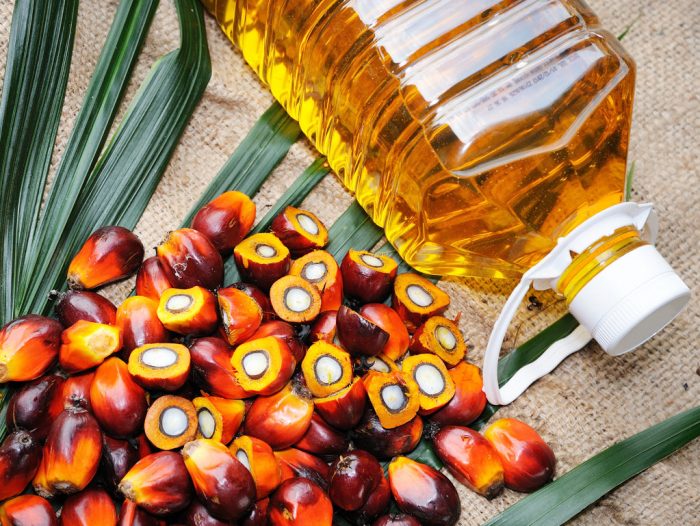Palm oil is being used for years in the food industry, but it has come under fire just recently after some studies revealed that consuming it may lead to metastases in people with cancer.
The European Food Safety Authority (EFSA) published, in May 2016, one study showing that glycerol-based process contaminants found in palm oil, but also in other vegetable oils, margarine, and some processed foods, raise potential health concerns for average consumers of these foods in all young age groups, and for frequent consumers in all age groups.
EFSA assessed the risks for public health of the substances: glycidyl fatty acid esters (GE), 3-monochloropropanediol (3-MCPD), and 2-monochloropropanediol (2-MCPD) and their fatty acid esters. The substances are forming during food processing, in particular when vegetable oils are being refined at high temperatures (approx. 200°C).
So, why does the palm oil is being considered the worst cooking oil? Because the highest levels of GE, as well as 3-MCPD and 2-MCPD were found in palm oils and palm fats, followed by other oils and fats, according to Efsa.europa.eu.
For consumers aged three and above, margarine, ‘pastries and cakes’ were the main sources of exposure to all substances.

Study: Palm oil leads to cancer spreading
Researchers discovered that a protein called CD36, when found on non-metastatic cancer cells, makes those cells become metastatic and causes cancer to spread in the body. The study was partly funded by UK charity Worldwide Cancer Research and headed by Professor Salvador Aznar Benitah, at the Institute for Research in Barcelona (IRB). This CD36 is found in the cell membranes of tumor cells and its job is to move fatty acids from outside of the cell into the middle. That’s why cancer spreads.
The researchers next looked at the role of fat intake on cancer spread. They studied mice with a high-fat diet (injected with a type of human oral cancer) and observed that this diet caused 50 percent more mice to have larger and more frequent metastases, Worldwidecancerresearch.org reported.
They went on to test a specific saturated fatty acid called palmitic acid – which is present at high levels in palm oil. The researchers treated human oral tumors with palmitic acid for two days then injected them into mice fed a standard diet. The team observed that all the mice with CD36 developed cancer spread compared to only half when not treated with palmitic acid.
“Palmitic acid or a high-fat diet specifically boosts the metastatic potential of CD36+ metastasis-initiating cells in a CD36-dependent manner”, according to Ncbi.nlm.nih.gov.
Why did they only tested palm oil? Maybe because it’s used in many household products from peanut butter, chocolate spread and bars, and other processed foods to toothpaste.
This research was carried out on mice and findings still need to be confirmed in humans concerning the impact of diet on cancer spread.

What is, actually, palm oil?
The “bad guy” – saturated fatty acid called palmitic acid – is a major component of animal and some vegetable fats, and is found at particularly high levels in this specific oil.
Palm oil is a light, cheap, and easy to use type of vegetable oil derived from the palm fruit of the African oil palm tree. Palm oil, like all fats, is composed of fatty acids, esterified with glycerol. It has an especially high concentration of saturated fats, specifically, of the 16-carbon saturated fatty acid palmitic acid, to which it gives its name. According to Wikipedia, palm oil contains 43.5 percent palmitic acid (saturated), followed by oleic acid (monosaturated) – 36.6 percent.
The highly saturated nature of palm oil makes it solid at room temperature in temperate regions, so it’s a cheap substitute for butter or trans fats in uses where solid fat is desirable, such as the making of pastry dough and baked goods.
Few of us are aware of just how much palm oil we consume and use in non-food products every day. From peanut butter to toothpaste, from chips to shampoos, from pastries to soaps, from chocolate to hazelnut spread, like Nutella.

Can you or should you avoid it?
You might not even be aware of just how much palm oil you’re eating already, but after the EFSA study was released, in May 2016, Coop, Italy’s largest supermarket chain, pulled around 200 of its own-brand products from its shelves, because they contained refined palm oil.
The Italian food giant Ferrero – which makes Nutella – adopted another strategy: invested in an advertising campaign in Italy, that assures consumers that palm oil used in Nutella is safe to eat. They say that they cannot use substitutes for palm oil (which is the second ingredient in Nutella spread, after sugar). The chocolate spread relies on palm oil for its smooth texture and considerably long shelf life and Nutella insists the spread would not be the same without the oil.
This oil has been around for a long time. In the late 1800s, archaeologists discovered a substance that they concluded was originally palm oil in a tomb at Abydos dating back to 3,000 BCE, says Wikipedia. Still, it hasn’t been as widely used until recent years. And it’s set to become even more widespread. Greenpeace predicts that palm oil demand will triple from 2000 to 2050.
EFSA did not recommend consumers stop eating it and said the further study was needed to assess the level of risk. The World Health Organization and the U.N. Food and Agriculture Organization flagged the same potential risk that EFSA had warned of regarding genetically modified (GM) organisms, but did not recommend consumers stop eating palm oil. The U.S. Food and Drug Administration hasn’t banned the use of palm oil in food eighter.
You can take these palm oil controversies as another warning against excessive consumption of fatty foods.






